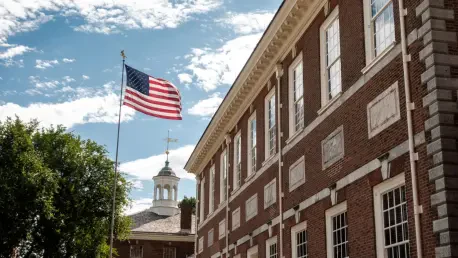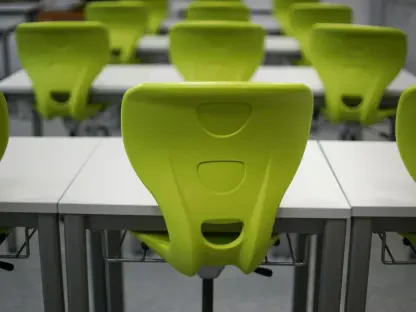In a rapidly shifting global landscape, American universities find themselves grappling with a flurry of obstacles that threaten their storied history of academic research excellence. These hurdles, such as restrictive student visa policies, sudden funding withdrawals, a compromised faculty pipeline, and stringent research practice constraints, are reshaping the trajectory of academic inquiry in the U.S. These challenges are not isolated but interdependent, creating significant concern among researchers, policymakers, and academic leaders. As universities strive to maintain their leadership in global knowledge creation, it’s imperative to dissect these multilayered challenges and devise strategies to overcome them.
Visa Challenges Undermine Research Diversity
Decline of International Student Enrollment
The U.S. has long been a beacon for international students, often attracting extraordinary minds to its esteemed institutions for advanced degrees. However, the uncertain climate surrounding student visas has deterred many prospective scholars from considering studying in America. Recent decisions concerning visa appointments have led to significant delays in processing times, prompting many potential students to explore opportunities in countries like the U.K. and Canada. Moreover, the Administration’s attempts to block certain universities from admitting international students further complicate matters. With travel bans cutting off students from specific regions, this has resulted in international scholars reconsidering their education and research options.
Current visa policies have caused those already in the U.S. to grapple with risky decisions, particularly when academic breaks require travel without assurance of return. Many universities have tried to mitigate these visa conundrums by employing funding from donors and foundations to ease the strain. By channeling resources to support affected international students, they enable these scholars to continue their education unhindered by such uncertainties. However, this ad-hoc solution is not a panacea, and universities are continually working to find more permanent solutions to the issue.
Legal and Geopolitical Struggles
The tenuous visa situation is further complicated by broader geopolitical challenges. For example, the administration has enacted executive orders placing restricting measures on international student entry due to security concerns. Harvard, among other universities, faced immediate impacts attempting to provide international students access. Universities are finding themselves caught between supporting diverse student bodies and adhering to swiftly changing federal mandates. While legal battles, such as those involving the issuance of restraining orders to temporarily alleviate constraints, exist, they are but temporary respites from a turbulent system.
Institutions can combat this decline in diversity by strengthening partnerships with foreign governments and institutions, developing relationships that offer alternative avenues for talent influx into the United States. Some institutions fear that these ongoing issues will lead to diminished international peril with complementary research efforts and altered perspectives, essential to cultivating diverse academic environments. Such apprehension underscores the need for careful diplomatic negotiation and collaborations with international peers moving forward.
Funding DilemmThe Impact on Research Continuity
Financial Pressure from Diminished Grants
Another pressing issue U.S. universities have faced is the abrupt cancellation and reduction of vital research funding. Allegations surrounding fostering antisemitic environments or backing DEI initiatives have led the administration to withhold crucial grants from universities, such as Harvard. This funding deprivation heavily impacts ongoing research projects, leaving studies in Alzheimer’s, cancer, and Parkinson’s Disease research in jeopardy. Legal efforts to challenge these cancellations have surfaced, with state Attorneys General questioning their constitutionality, citing both procedural and statutory concerns.
Scholars argue that the discretionary removal of funding compromises the integrity of multi-year, carefully designed research efforts, threatening their feasibility and potentially negating years of labor. This ongoing litigation continues to contribute to uncertainty, leaving institutions struggling to budget resources effectively. The disruption fosters a critical need for broader support from state and private organizations, aiming to fill the financial void, ensuring continued innovation and scientific inquiry in essential research areas.
The Legal Dimension and Institutional Response
Judge William G. Young’s involvement in evaluating grant cancellations has sparked debate about arbitrary executive actions and possible politicization of academic research. His rulings suggest unease with current practices, emphasizing that funding revocation must adhere to strict legal protocols. The ongoing judicial discussions provide openings to reinforce the procedural safeguards surrounding research financing, potentially allowing universities to stabilize their financial footing in the long term.
Universities are working closely with legal representatives, advocating for policy revisions to reinforce research funding mechanisms commonly relied upon by academic researchers. The wider academic community recognizes the potential ramifications of sustained funding withdrawal, urging collaboration among public and private stakeholders. As the discourse develops, institutions aim to fortify research foundations, erecting robust financial shieldings to deter future fiscal upheavals.
Faculty Pipeline and Research Brain Drain
Escalating Competition for Talent
The faculty pipeline within U.S. institutions is under threat, as many international researchers weigh the benefits of opportunities abroad against restrictive domestic policies. European countries have sought to capitalize on these challenges by offering competitive packages, enticing American scientists and researchers to relocate. This migration trend expresses not only an immediate talent loss but foreshadows a future where America’s intellectual capital may decrease substantially.
Domestic challenges have included relational uncertainty for international graduate students, many of whom would potentially occupy future faculty roles within major universities. Key concerns lie in the lack of sustained funding and visa restrictions, which disincentivize students from committing to long-term careers in the U.S. Further, losses in this population segment disrupt succession strategies and diminish competitive research posturing on a global scale. Anchoring these challenges is an urgent call for policies that facilitate long-term visas and tenure pathways for emerging academic leaders.
Institutional Strategies to Mitigate Loss
American universities are adapting strategies to withstand this talent shift by investing heavily in domestic talent development and international collaboration. Increasingly, institutions are turning to innovative recruitment methods aimed at identifying and cultivating new talent domestically. This includes bolstering science, technology, engineering, and mathematics (STEM) programs to create a robust pipeline feeding their faculty ranks.
Institutions are also seeking to enhance partnerships with international universities, leveraging joint research projects to maintain collaborative exchanges. These partnerships help sustain momentum in ongoing research and offer mentorship opportunities for burgeoning scholars. Through targeted fellowship programs, universities seek to attract international scholars, helping them navigate and thrive in the existing academic system. Use of dual appointments and sharing faculty positions with international institutions is emerging as a beneficial practice for retaining research talent.
Restrictions on Research Practices
The Debate on Gain-of-Function Research
Regulations governing research practices have come under heavy scrutiny, with the introduction of executive orders implementing strict protocols around gain-of-function studies. These orders reflect concerns about biological safety and aim to curtail the potential misuse of research on pathogens. Presidential directives target federally funded projects in areas like CRISPR-Cas9 gene editing, implicating a more rigorous review and monitoring standard for such studies.
The executive orders mandate that all related projects undergo renewed scrutiny and adhere to stringent safety measures before proceeding. By placing restrictions on scientific inquiry, broader questions surface regarding the scope of central oversight over scientific evolution. Though these protocols aim to deter malevolent use, the breadth of their applications raises issues regarding scientific autonomy and institutional trust in self-regulated research practices.
Balancing Innovation with Safety Concerns
Researchers and institutions alike are urged to consider both innovation and associated safety concerns when conducting and assessing gain-of-function research, given the essential progress made in these fields. Many advocate for a balanced approach, grounding such studies in ethical practices aligned with public health considerations. Foremost, the advancing sophistication of gene-editing technologies like CRISPR necessitates nuanced policy guidelines, which support safe, transparent infrastructural practices. Institutions are exploring pathways to establish internal review panels that adhere to, and possibly exceed, mandated safety measures. Efforts to improve peer-review systems and integrate external auditors deepen collective commitment to safely advancing these intricate studies.
Proactively, universities may engage in dialogues with federal officials, fostering transparent connections with government stakeholders, reassuring that institutional guidelines complement public safety intent. Such collaborative efforts strengthen academia’s role in contributing meaningfully to policy discourse while ensuring continued progression in transformative scientific exploration.
A Path Forward for American Research
Amid a dynamically changing global environment, American universities are confronting a multitude of challenges that jeopardize their prestigious record of excellence in academic research. These obstacles include restrictive student visa policies, which hinder the influx of international talent essential for diverse intellectual growth, and unexpected funding cuts that threaten the sustainability of research projects. Additionally, a compromised faculty pipeline poses a risk to the transfer of knowledge and mentorship critical to educational advancement. Coupled with stringent research practice regulations, these challenges collectively reshape the landscape of academic inquiry in the United States. They aren’t isolated but are interconnected, leading to substantial concern among researchers, policymakers, and university leaders. For U.S. universities to retain their leadership in global knowledge production, it’s vital to thoroughly analyze these multifaceted issues and forge comprehensive strategies to address and overcome them, ensuring adaptation and resilience in an evolving academic world.









